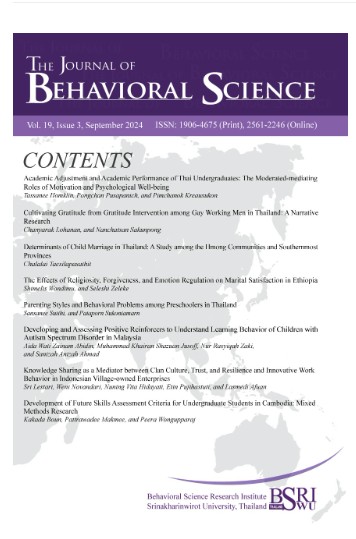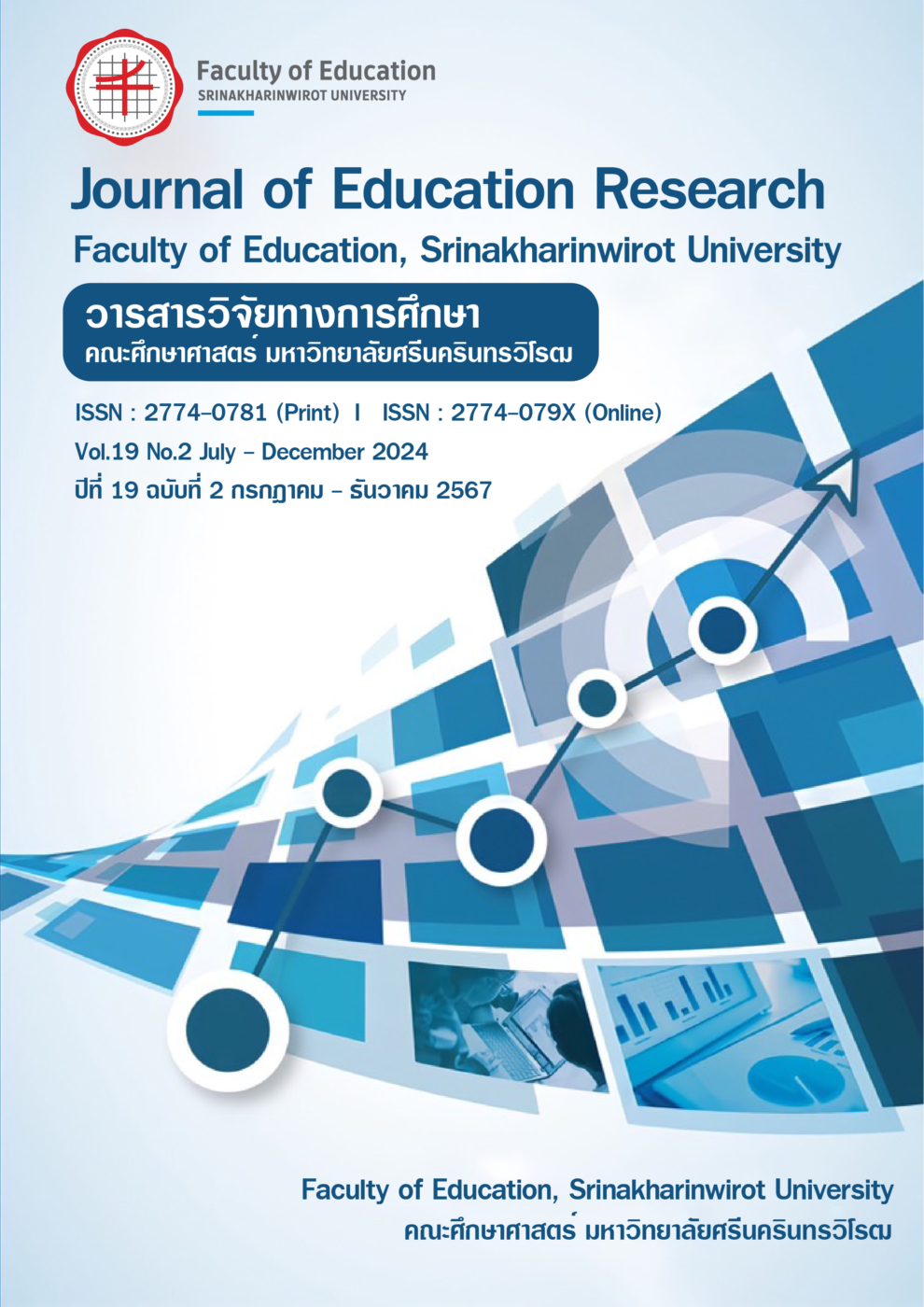Abstract
The goal of this study was to develop a new behavioral observation measurement of playing interaction of Parent and child in preschool age (3-5 years of age). THE PARENT-CHILD PLAY INTERACTION MEASUREMENT (3-5 YEARS OLD) was designed to be developmentally appropriate for preschooler.It was brief and easy to use after training for 2 days.The measure was also reliable and suitable for clinical and research use. This measurement was developed based on the existing literature on developmental psychology and positive parenting and measurements related to the topic. The content validity was validated by 3 experts, using data fro, 95 mothers playing with their children with a standard set of toys. Results indicated that the instrument was reliable and valid. The Kuder – Richardson coefficient was .81 with good to excellent inter-rater reliability between independent coders (kappa = .83 to 1.00). Exploratory Factor Analysis of the coded behaviors resulted in a six-component model (i.e. Parent Positive Affect, Child Positive Affect, Mutuality, Acceptance, Cognitive Stimulation, and Social – Emotional Stimulation). All six factors could explain 51.65 % of the total variance of the final 26 items in the instrument. Criterion-Related Validity of this instrument, as associated with total scores of the 13 items-ECHOME inventory (Caldwell & Bradley, 1984), was highly acceptable (r = .71, p < .01).
Methods
ผู้วิจัยพัฒนาแบบสังเกตจากการศึกษาแนวคิด ทฤษฎี และแบบวัดมาตรฐานที่มีความเกี่ยวข้อง วิเคราะห์ความตรงเชิงเนื้อหาโดยผู้ทรงคุณวุฒิจำนวน 3 ท่าน และเก็บข้อมูลกับกลุ่มตัวอย่างที่เป็นแม่และเด็กวัยก่อนเข้าโรงเรียน (อายุ 3-5 ปี) จำนวน 95 คู่
Author
Sukpreedee, Nuttanee
Chulalongkorn University. Faculty of Psychology
Published
คลังปัญญาจุฬาลงกรณ์มหาวิทยาลัย The Chulalongkorn University Intellectual Repository (CUIR)
Year: 2024 2016




